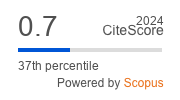Correlation of blood, salivary glucose levels and bloo HbA1c% in healthy and previously diagnosed Diabetes Mellitus Type 2 in a sec ion of patients of Baghdad hospital, Iraq
Keywords:
Glucose level, HbA1c%, Diabetes disease, salivaAbstract
Background: Diabetes mellitus is a metabolic disorder affecting people worldwide, which require constant monitoring of their glucose levels. Commonly employed procedures include collection of blood or urine samples causing discomfort to the patients. Necessity arises to find alternative non invasive technique is required to monitor glucose levels. Saliva is one of most abundant secretions in the human body and its collection is easy, noninvasive and painless technique. Objective: The aim of this study was to determine the efficacy of saliva as a diagnostic tool by study the correlation between blood and salivary glucose levels and glycosylated hemoglobin (HbA1c%) in diabetes and non diabetes, and the comparison of salivary glucose level and blood HbA1c% with serum glucose level in healthy and diabetic subjects. Type of study: cross- sectional study.Method: Saliva and blood samples were collected from 40 patients visited the Baghdad hospital in Iraq who were previously diagnosed with non-insulin-dependent (type 2) diabetes mellitus and 10 healthy as control (male and female) in age group of 30-65 years. The samples were examined to determine blood and salivary glucose level by the glucose oxidase- peroxidase method and blood HbA1c% by the ion exchange resin method. Results: Our results showed significantly higher salivary and serum glucose level in diabetes compared to control and significantly positive correlation between salivary and serum glucose in diabetes, control, and both groups together; the blood HbA1c% in diabetes was significantly higher compared to control and found a positive correlation between blood HbA1c% and salivary and serum glucose level in diabetes and control. Conclusion: salivary glucose appears to be an indicator of serum glucose concentration in diabetes.













